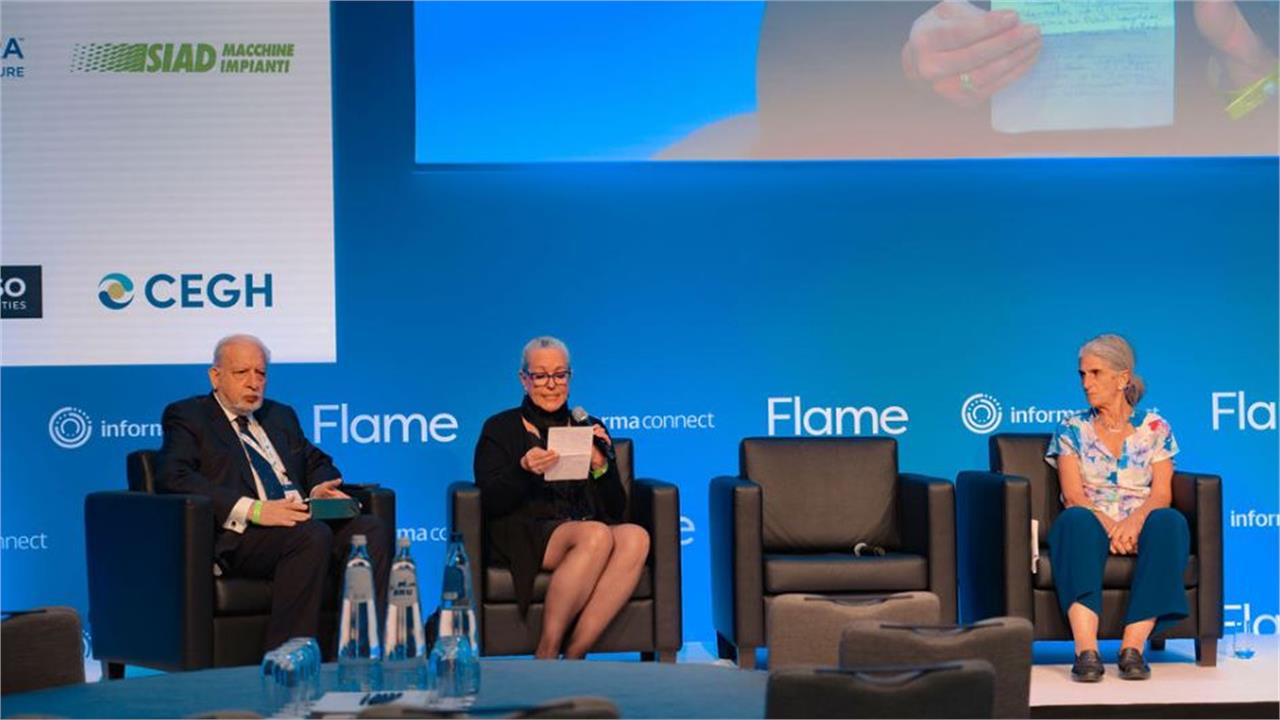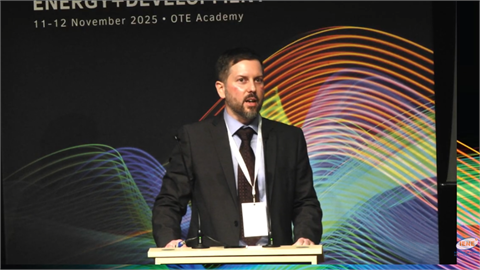Following an invitation by the organisers the Chairman of IENE Costis Stambolis travelled to Amsterdam and participated once again in the annual Flame conference ( May 13-15) which brought together some of Europe’s top gas suppliers, traders and industry leaders. With more than 300 delegates and 100 speakers and panelists this year’s Flame proved highly successful as Europe’s top energy platform for energy professionals.
Speaking in Stream A, which was devoted on the East Mediterranean and the regional markets, expertly moderated by Gina Cohen, a highly respected analyst on East Mediterranean energy markets, Costis focused on the role and prospects of the Southern Gas Corridor. In his presentation Costis noted that the South Corridor came into operation five years ago and was primarily destined to ship Caspian gas to Europe via Turkiye, Greece, Albania, landing in South Italy and from there onwards to the main European gas network,. Today, the South Caucasus-TANAP-TAP system delivers some 16 bcma (about 10.5 bcma to Europe and 5.7 bcma to Turkiye).
Since then, a new gas corridor has entered into operation, namely the TurkStream, which delivers Russian gas to Turkiye and to SE Europe, including Bulgaria, North Macedonia, Serbia, Hungary and Slovakia. In essence, this is a parallel operation of gas flowing from East to West, and in the broad sense also forms part of the South Corridor concept (Only that now EU does not like the smell of Russian gas because of geopolitical considerations). Between them, TANAP-TAP and TurkStream deliver some 25 bcm to European destinations annually.
At the same time, as IENE’s Chairman noted, “we have seen a proliferation of gas interconnections, branching off the South Corridor and add on FSRU facilities. So, our original South Corridor becomes an Expanded South Corridor. A latest development concerns coordinated efforts by SEE’s Independent Gas Transmission System Operators to develop the so called “Vertical Corridor”, which will move gas from the south (Alexandroupolis) to the north (Hungary/Ukraine). Following the start of operation of the IGB in October 2023, this ambitious project is starting to take shape and form.”
According to Costis, the EU today faces two big issues, with regard to gas supplies from the East. What to do with unwanted but necessary Russian gas? A road map for phasing out deliveries by 2027 or earlier is now being discussed at high level in Brussels. A second issue is EU’s unwillingness to encourage companies in its member countries to sign long term contracts (e.g. 15+ years with Azerbaijan), although extra gas supplies from the Caspian region will be clearly needed, especially if Russian gas is completely banned. SOCAR and the government of Azerbaijan need to see firm commitments - in the form of actual contracts - before committing further investment in developing new fields in the Caspian. The EU leadership and Brussels bureaucracy appear unable or unwilling, or both, to put aside their green energy preoccupations and consider market realities. If there is no radical revision of totally misguided current thinking (which considers gas as a stranded asset), sooner or later there is going to be yet another gas supply crunch in Europe.




